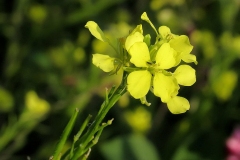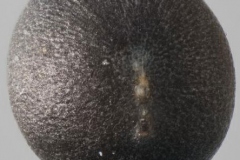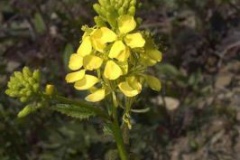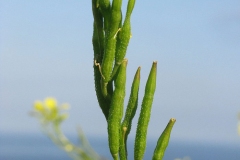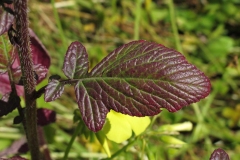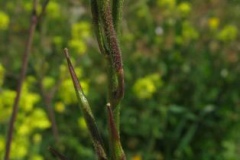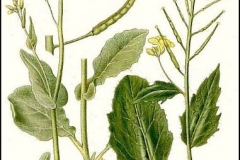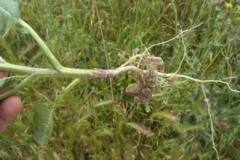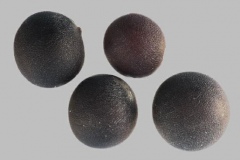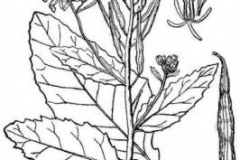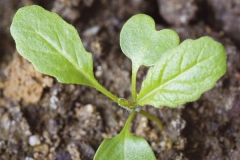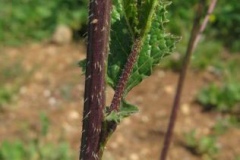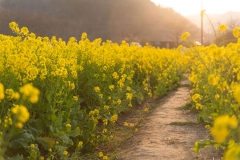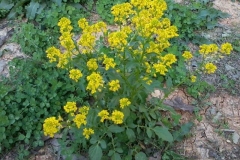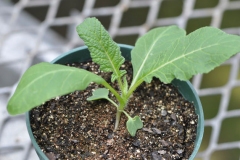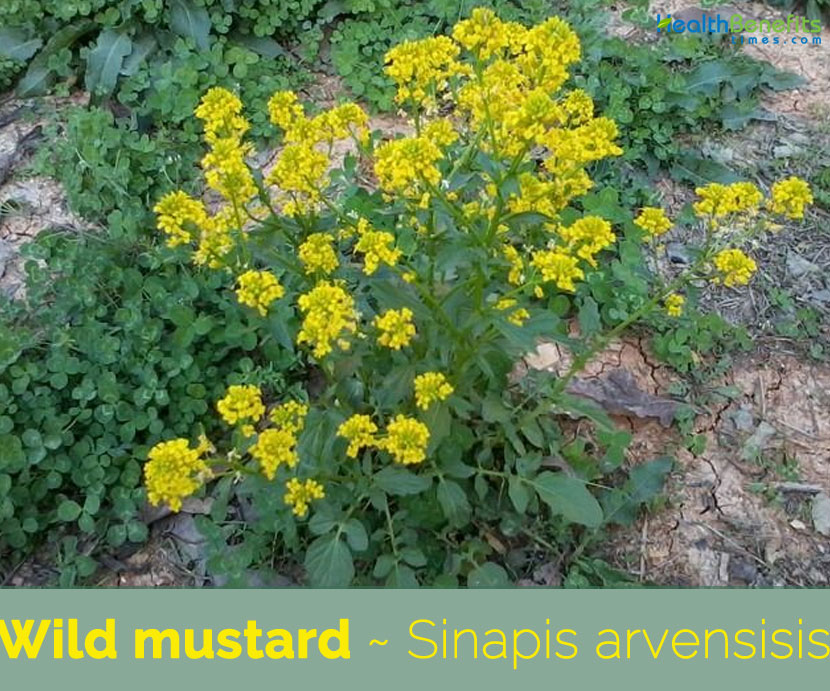 Sinapis arvensis, the charlock mustard, field mustard, wild mustard or charlock, is an annual or winter annual plant of the genus Sinapis in the family Cruciferae that includes broccoli, cabbage, cauliflower, kale and Brussels sprouts. As such, they have similar health benefits as other cruciferous vegetables. The plant is native to temperate regions of Europe, Asia Minor, southwest Asia and North Africa. It was introduced into North America, South America, Australia, Japan and South Africa and now occurs throughout all Canadian provinces, as well as in the MacKenzie District, Northwest Territories.
Sinapis arvensis, the charlock mustard, field mustard, wild mustard or charlock, is an annual or winter annual plant of the genus Sinapis in the family Cruciferae that includes broccoli, cabbage, cauliflower, kale and Brussels sprouts. As such, they have similar health benefits as other cruciferous vegetables. The plant is native to temperate regions of Europe, Asia Minor, southwest Asia and North Africa. It was introduced into North America, South America, Australia, Japan and South Africa and now occurs throughout all Canadian provinces, as well as in the MacKenzie District, Northwest Territories.
The genus name Sinapis derives is derived from the Greek word “sinapi” meaning ‘mustard’. The species name arvensis is a Latin adjective meaning from/of the field’. The plant has got several common names including Charlock, Charlock mustard, Wild mustard, field mustard, Wild mustard, California-rape, Corn mustard, Wild kale, yellow charlock, kedlock, kelk and kilk. Pieris rapae, the small white butterfly, and Pieris napi, the green veined white butterfly are noteworthy consumers of charlock during their larval stages.
Plant Description
Wild mustard is an annual or winter annual plant that grows about 20–80 centimeters (7.9–31.5 in) of height, but under optimal conditions can exceed one meter. The plant is grows in the plains and mountains, in pastures, fields, roadsides, waste places (such as railways, tips and waste ground), cultivated fields, fallow fields, gardens, clearings, orchards, shores, riverbanks, railway lines and disturbed areas. The plant primarily grows better on nutrient-rich and usually also in lime-rich soils. The plant has short taproot.
Leaves
Leaves are 1½ to 7 inches long, ½ to 2 inches wide, irregularly toothed, mostly hairless, broadly oval to egg-shaped. The basal leaves are oblong, oval, lanceolate, lyrate, pinnatifid to dentate, 4–18 centimeters (1.6–7.1 in) long, 2–5 centimeters (0.79–1.97 in) wide. The cauline leaves are much reduced and are short petiolate to sessile but not auriculate-clasping.
The stems are green or with reddish pigmentation, especially near the leaf axils, erect and amply branched, mostly smooth except for scattered, coarse hairs, more dense on the mid to lower stems.
Flower
Flowers are numerous in dense, compounded clusters, as much as 12 inches long. Flower stalks are stout, 1/16 to 1/4 inch long, erect or ascending. The 4 sepals are 1/5 to 1/8 inch long, and are narrowly oblong, spreading, the edges rolled in. The 4 petals are showy, spatulate, 1/3 to 1/2 inch long, with a narrow, erect claw about half the length of the petal.
Fruits are slender, round pod that are 1.5 to 2 inches long, about 1/16 inches broad, and hairless to somewhat short-hairy. Pods are straight or slightly up-curved, and the flattened beak 1/3 to 1/2 as long as the valves and similarly rather evidently 3-nerved. The pod angles out and up from the stem and bulges where the ripening seed is forming. There are 7-12 seeds with fine honey-comb patterns in each silique. Ripe seeds are smooth 1-1.5 mm in diameter. They are usually black, can also be reddish-brown, brown or greenish-brown.
Traditional uses and benefits of Wild mustard
- It is good for stimulating the appetite.
- It is said to be good for the treatment of melancholy or depression.
- The Navajos used Sinapis arvensis as a ceremonial medicine.
Culinary Uses
- Leaves can be consumed raw or cooked.
- Somewhat hot, the young leaves are used as a flavoring in salads, where they add a piquant flavor.
- Older leaves are used as a potherb.
- It is best to use just the young shoots and leaves in the spring, older leaves are bitter.
- Flowering stems can be consumed after being cooked.
- Pleasant, cabbage/radish flavor, they can be used as a broccoli substitute before the flowers open.
- Stems should be lightly steamed for no more than 5 minutes.
- Flowers can also be cooked as a vegetable or used as a garnish.
- Seed can be sprouted and eaten raw.
- It can be added to salads and sandwiches.
- Seed can be ground into a powder and used as a food flavoring.
- Edible oil is obtained from the seed.
- Leaves of wild mustard are edible at the juvenile stage of the plant they are usually boiled.
Other Facts
- Edible semi-drying oil is obtained from the seed.
- It is also used in making soap and burns well so can be used for lighting.
- A type of oil can be extracted from the seed which has been used for lubricating machinery.
- Wild mustard plants have from 10-18 seeds per pod and from 2,000-3,500 seeds per plant.
Precautions
- The plant is possibly poisonous once the seedpods have formed.
- Seeds are toxic to most animals, except birds, and can cause gastrointestinal problems, especially if consumed in large quantities.
References:
http://luirig.altervista.org/schedenam/fnam.php?taxon=Sinapis+arvensis
http://www.theplantlist.org/tpl1.1/record/kew-2476411
https://www.itis.gov/servlet/SingleRpt/SingleRpt?search_topic=TSN&search_value=23310#null
https://davesgarden.com/guides/pf/go/32156/
https://plants.usda.gov/core/profile?symbol=SIAR4
https://npgsweb.ars-grin.gov/gringlobal/taxonomydetail.aspx?id=33965
https://pfaf.org/user/Plant.aspx?LatinName=Sinapis+arvensis
https://www.cabi.org/isc/datasheet/117180
http://www.floracatalana.net/sinapis-arvensis-l
https://en.wikipedia.org/wiki/Sinapis_arvensis
https://www.cal-ipc.org/plants/profile/sinapis-arvensis-profile/
https://wiki.bugwood.org/HPIPM:Wild_mustard
https://gd.eppo.int/taxon/SINAR


